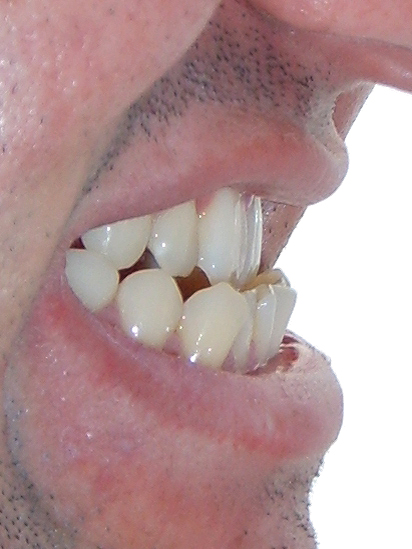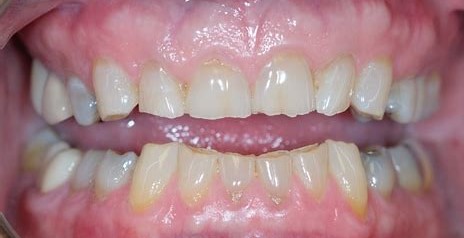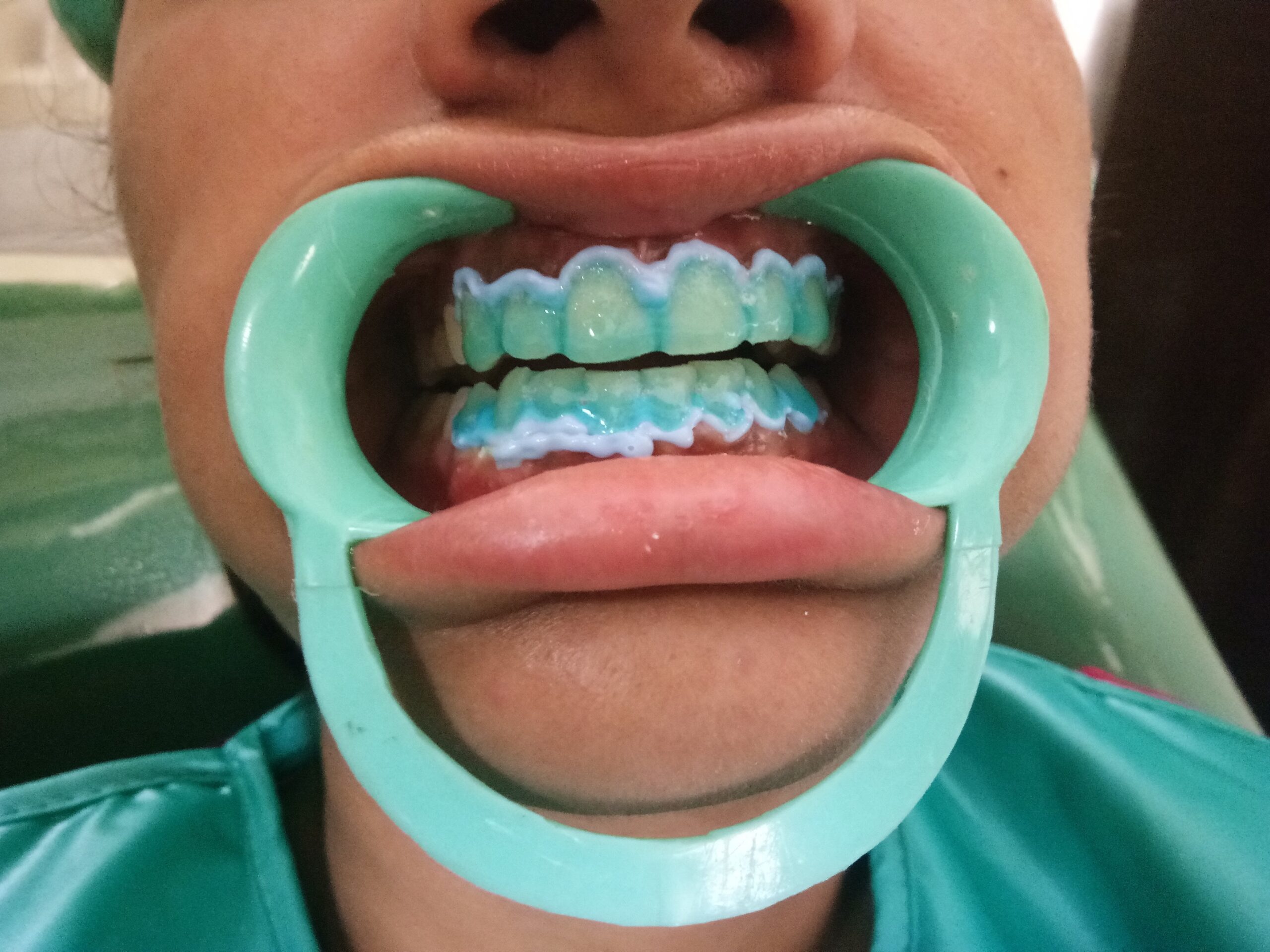What Is Maxillary Hypoplasia?
Maxillary hypoplasia is a condition in which the upper jawbone (maxilla) is underdeveloped and does not grow properly. This can result in a smaller and/or recessed upper jaw, which can affect the appearance and functionality of the face and mouth.
Causes Of Maxillary Hypoplasia:
Maxillary hypoplasia can be caused by a variety of factors including genetics, malnutrition, hormonal imbalances, trauma, and certain medical conditions. It is often associated with a cleft lip or palate, and may also be present with other craniofacial abnormalities.
1. Genetic factors:
In many cases, maxillary hypoplasia is caused by genetic factors, meaning it can run in families. It may be due to abnormal genetic mutations that affect the bone growth and development of the skull.
2. Developmental conditions:
Some conditions, including cleft lip and palate, Down syndrome, Apert syndrome, or Pierre-Robin sequence, are also associated with maxillary hypoplasia.
3. Trauma:
Injury or accidents to the upper jaw or face during childhood or adolescence can interrupt the growth and development of the maxilla, leading to maxillary hypoplasia.
4. Malnutrition:
Inadequate nutrition or vitamin deficiency during infancy or childhood can also affect the development of the jawbones and lead to maxillary hypoplasia.
5. Environmental factors:
Exposure to certain environmental factors, such as alcohol and tobacco use during pregnancy or developmental years, can affect the proper growth and development of the jawbone.
The exact underlying cause of maxillary hypoplasia can vary from person to person. A dental professional or an oral surgeon can perform a physical exam, imaging tests, and family medical history to determine the cause of maxillary hypoplasia in an individual.
Signs And Symptoms Of Maxillary Hypoplasia:
Maxillary hypoplasia refers to an underdeveloped upper jaw, which can cause various symptoms. In some cases, the symptoms can be severe and affect several aspects of oral health and facial appearance. Here are some of the common signs and symptoms of maxillary hypoplasia:
1. Crowded teeth:
Maxillary hypoplasia can affect the alignment of the upper arch of teeth, resulting in crowded, crooked teeth, and bite problems.
2. Receding chin:
When the upper jaw is underdeveloped, the lower jaw tends to be more prominent, and the chin appears receded.
3. Mouth breathing:
Maxillary hypoplasia can cause obstruction of the nasal airway, resulting in mouth breathing, snoring or sleep apnea.


4. Speech difficulties:
A smaller maxilla can affect speech, particularly pronunciation of certain consonant sounds.
5. Sunken-looking cheeks:
In severe cases of maxillary hypoplasia, the cheekbones may appear flat or sunken, affecting facial aesthetics.
6. Difficulty eating:
A smaller upper jaw can also affect a person’s ability to bite and chew food properly.
7. Increased risk of dental issues:
Maxillary hypoplasia can increase the risk of dental problems such as cavities, gum disease, and temporomandibular joint disorder (TMD).
8. Chronic sinusitis:
The blocked nasal airway caused by maxillary hypoplasia can contribute to chronic sinusitis.
These symptoms can vary depending on the severity of the condition and the age of the affected person. It is important to seek medical attention if you or someone you know shows any signs of maxillary hypoplasia, to avoid severe complications and to develop a proper treatment plan. A dental professional or an oral surgeon can diagnose and recommend an appropriate treatment plan.
Diagnosis Of Maxillary Hypoplasia:
Maxillary hypoplasia is typically diagnosed by a dentist or orthodontist who specializes in craniofacial abnormalities. The diagnosis may involve a medical history review, physical examination, and imaging tests such as x-rays or CT scans.
Treatment Of Maxillary Hypoplasia:
Treatment for maxillary hypoplasia will depend on the underlying cause and severity of the condition. In some cases, observation may be recommended, while in others, orthodontic treatment, jaw surgery, or a combination of both may be necessary.
Maxillary hypoplasia is a condition in which the upper jaw bone (maxilla) is smaller than normal, leading to bite problems, facial asymmetry, difficulty in chewing, speech impairment, and breathing issues. Here are some possible treatment options for maxillary hypoplasia:
1. Orthodontic treatment:
In mild cases, orthodontic treatment such as braces, expanders, and other appliances can help move the teeth and jaws into the desired position. Orthodontic treatment can improve the person’s bite, enhance facial aesthetics and breathing functions.
2. Maxillary osteotomy:
This is an oral surgery that involves cutting and repositioning the upper jawbone to correct the skeletal deficiency causing maxillary hypoplasia. The jawbone can be moved forward, upward or laterally, depending on the specific deficiency. The surgeon immobilizes the bone in the new position with plates and screws, and then the bone heals weekly.
3. Le Fort I, II, or III osteotomy:
These are surgical procedures in which one or more of the bones around the nose and mouth are cut and repositioned to correct maxillary hypoplasia. Le Fort I osteotomy repositions the upper jawbone, while Le Fort II defines the middle part of the face, and Le Fort III repositions the bones around the orbits.
4. Distraction osteogenesis:
In some cases, the person’s body can generate new bone, so a device is used to gradually stretch the bone over a period of weeks, creating space for new bone growth.
5. Implants or dentures:
After surgical treatment, in some cases, an implant or denture may be required to replace teeth that are not saved or cannot be saved.
The treatment for maxillary hypoplasia depends on the age, severity, and cause of the condition. A dental professional or an oral surgeon can diagnose and recommend the most appropriate treatment for the specific situation.
Prognosis:
The prognosis for maxillary hypoplasia will depend on the severity of the condition and the effectiveness of the chosen treatment. In many cases, orthodontic treatment and/or jaw surgery can help improve the appearance and functionality of the face and mouth, leading to improved quality of life. In severe cases, further surgeries or ongoing care may be necessary to maintain optimal health and function. Regular visits to a dentist or orthodontist who specializes in treating craniofacial abnormalities can help ensure proper care and management of this condition.
What Is Maxillary Hypoplasia?
Maxillary hypoplasia is a condition in which the upper jawbone (maxilla) is underdeveloped and does not grow properly. This can result in a smaller and/or recessed upper jaw, which can affect the appearance and functionality of the face and mouth.
Causes Of Maxillary Hypoplasia:
Maxillary hypoplasia can be caused by a variety of factors including genetics, malnutrition, hormonal imbalances, trauma, and certain medical conditions. It is often associated with a cleft lip or palate, and may also be present with other craniofacial abnormalities.
1. Genetic factors:
In many cases, maxillary hypoplasia is caused by genetic factors, meaning it can run in families. It may be due to abnormal genetic mutations that affect the bone growth and development of the skull.
2. Developmental conditions:
Some conditions, including cleft lip and palate, Down syndrome, Apert syndrome, or Pierre-Robin sequence, are also associated with maxillary hypoplasia.
3. Trauma:
Injury or accidents to the upper jaw or face during childhood or adolescence can interrupt the growth and development of the maxilla, leading to maxillary hypoplasia.
4. Malnutrition:
Inadequate nutrition or vitamin deficiency during infancy or childhood can also affect the development of the jawbones and lead to maxillary hypoplasia.
5. Environmental factors:
Exposure to certain environmental factors, such as alcohol and tobacco use during pregnancy or developmental years, can affect the proper growth and development of the jawbone.
The exact underlying cause of maxillary hypoplasia can vary from person to person. A dental professional or an oral surgeon can perform a physical exam, imaging tests, and family medical history to determine the cause of maxillary hypoplasia in an individual.
Signs And Symptoms Of Maxillary Hypoplasia:
Maxillary hypoplasia refers to an underdeveloped upper jaw, which can cause various symptoms. In some cases, the symptoms can be severe and affect several aspects of oral health and facial appearance. Here are some of the common signs and symptoms of maxillary hypoplasia:
1. Crowded teeth:
Maxillary hypoplasia can affect the alignment of the upper arch of teeth, resulting in crowded, crooked teeth, and bite problems.
2. Receding chin:
When the upper jaw is underdeveloped, the lower jaw tends to be more prominent, and the chin appears receded.
3. Mouth breathing:
Maxillary hypoplasia can cause obstruction of the nasal airway, resulting in mouth breathing, snoring or sleep apnea.


4. Speech difficulties:
A smaller maxilla can affect speech, particularly pronunciation of certain consonant sounds.
5. Sunken-looking cheeks:
In severe cases of maxillary hypoplasia, the cheekbones may appear flat or sunken, affecting facial aesthetics.
6. Difficulty eating:
A smaller upper jaw can also affect a person’s ability to bite and chew food properly.
7. Increased risk of dental issues:
Maxillary hypoplasia can increase the risk of dental problems such as cavities, gum disease, and temporomandibular joint disorder (TMD).
8. Chronic sinusitis:
The blocked nasal airway caused by maxillary hypoplasia can contribute to chronic sinusitis.
These symptoms can vary depending on the severity of the condition and the age of the affected person. It is important to seek medical attention if you or someone you know shows any signs of maxillary hypoplasia, to avoid severe complications and to develop a proper treatment plan. A dental professional or an oral surgeon can diagnose and recommend an appropriate treatment plan.
Diagnosis Of Maxillary Hypoplasia:
Maxillary hypoplasia is typically diagnosed by a dentist or orthodontist who specializes in craniofacial abnormalities. The diagnosis may involve a medical history review, physical examination, and imaging tests such as x-rays or CT scans.
Treatment Of Maxillary Hypoplasia:
Treatment for maxillary hypoplasia will depend on the underlying cause and severity of the condition. In some cases, observation may be recommended, while in others, orthodontic treatment, jaw surgery, or a combination of both may be necessary.
Maxillary hypoplasia is a condition in which the upper jaw bone (maxilla) is smaller than normal, leading to bite problems, facial asymmetry, difficulty in chewing, speech impairment, and breathing issues. Here are some possible treatment options for maxillary hypoplasia:
1. Orthodontic treatment:
In mild cases, orthodontic treatment such as braces, expanders, and other appliances can help move the teeth and jaws into the desired position. Orthodontic treatment can improve the person’s bite, enhance facial aesthetics and breathing functions.
2. Maxillary osteotomy:
This is an oral surgery that involves cutting and repositioning the upper jawbone to correct the skeletal deficiency causing maxillary hypoplasia. The jawbone can be moved forward, upward or laterally, depending on the specific deficiency. The surgeon immobilizes the bone in the new position with plates and screws, and then the bone heals weekly.
3. Le Fort I, II, or III osteotomy:
These are surgical procedures in which one or more of the bones around the nose and mouth are cut and repositioned to correct maxillary hypoplasia. Le Fort I osteotomy repositions the upper jawbone, while Le Fort II defines the middle part of the face, and Le Fort III repositions the bones around the orbits.
4. Distraction osteogenesis:
In some cases, the person’s body can generate new bone, so a device is used to gradually stretch the bone over a period of weeks, creating space for new bone growth.
5. Implants or dentures:
After surgical treatment, in some cases, an implant or denture may be required to replace teeth that are not saved or cannot be saved.
The treatment for maxillary hypoplasia depends on the age, severity, and cause of the condition. A dental professional or an oral surgeon can diagnose and recommend the most appropriate treatment for the specific situation.
Prognosis:
The prognosis for maxillary hypoplasia will depend on the severity of the condition and the effectiveness of the chosen treatment. In many cases, orthodontic treatment and/or jaw surgery can help improve the appearance and functionality of the face and mouth, leading to improved quality of life. In severe cases, further surgeries or ongoing care may be necessary to maintain optimal health and function. Regular visits to a dentist or orthodontist who specializes in treating craniofacial abnormalities can help ensure proper care and management of this condition.




